北师大版(2019)必修 第三册Unit 8 Green living lesson 3 White bikes on the road课件(共43张PPT)
文档属性
| 名称 | 北师大版(2019)必修 第三册Unit 8 Green living lesson 3 White bikes on the road课件(共43张PPT) | 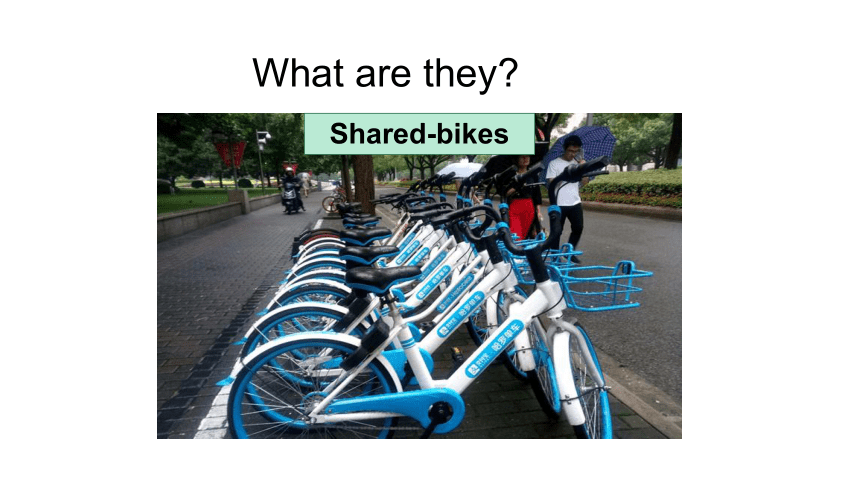 | |
| 格式 | pptx | ||
| 文件大小 | 47.2MB | ||
| 资源类型 | 教案 | ||
| 版本资源 | 北师大版(2019) | ||
| 科目 | 英语 | ||
| 更新时间 | 2023-05-28 11:02:01 | ||
图片预览

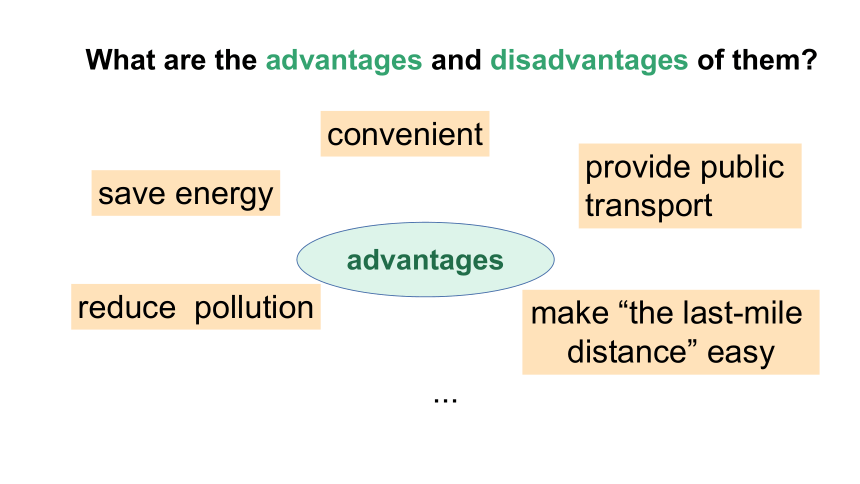
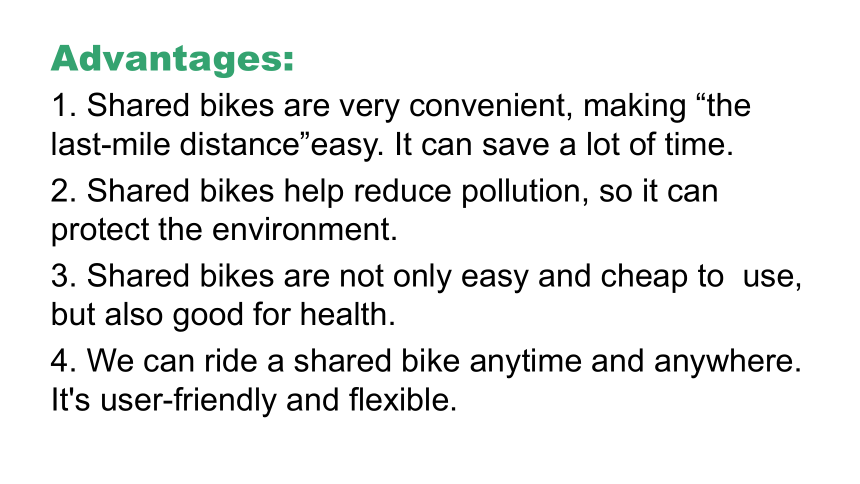
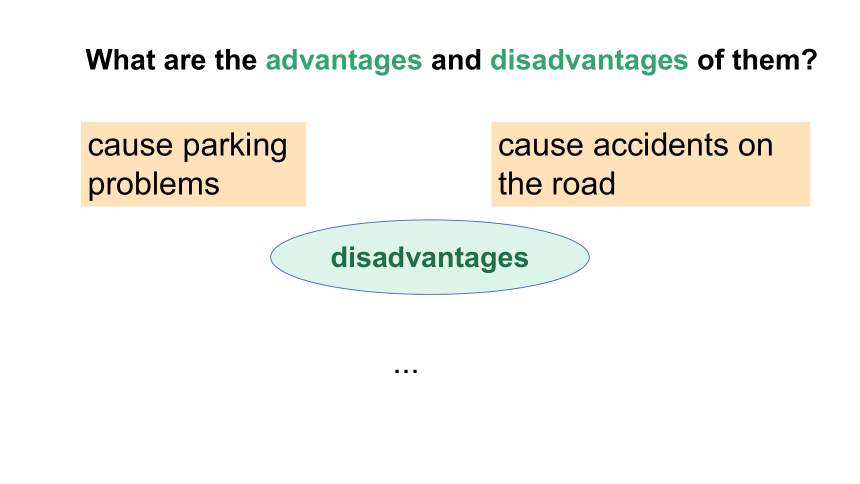
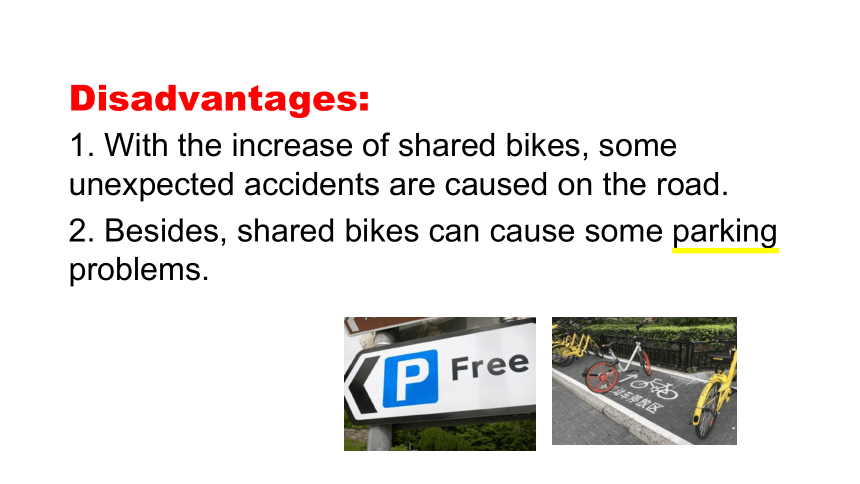
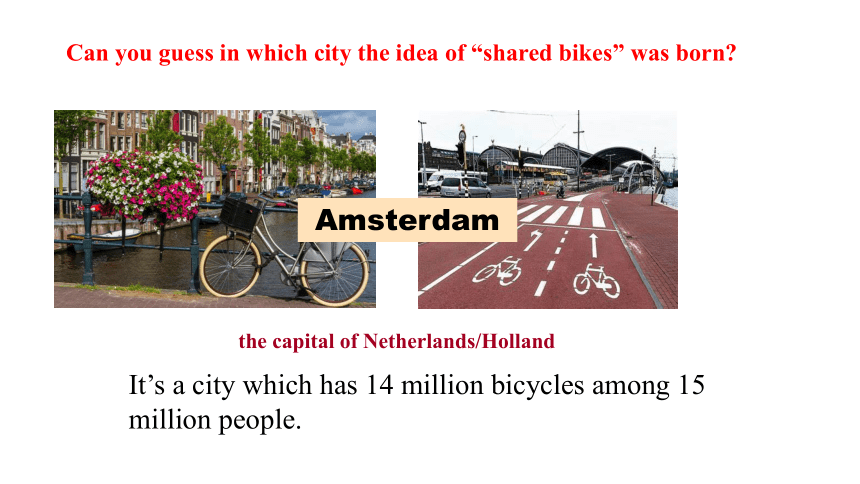
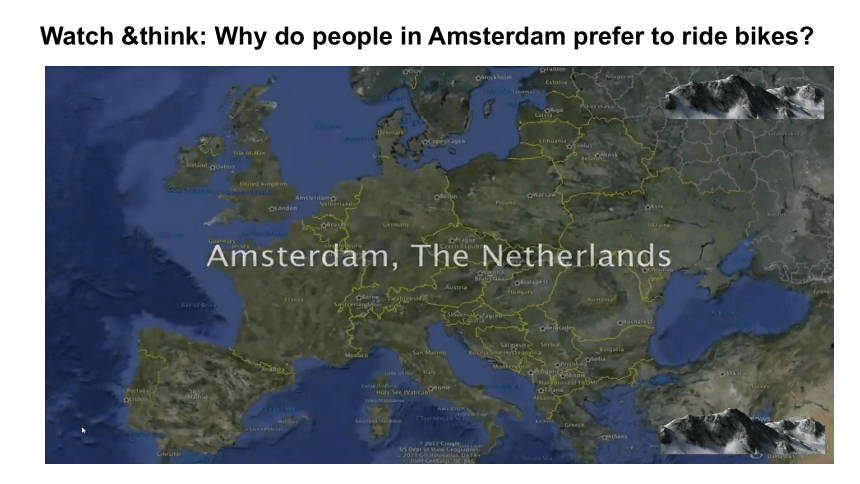
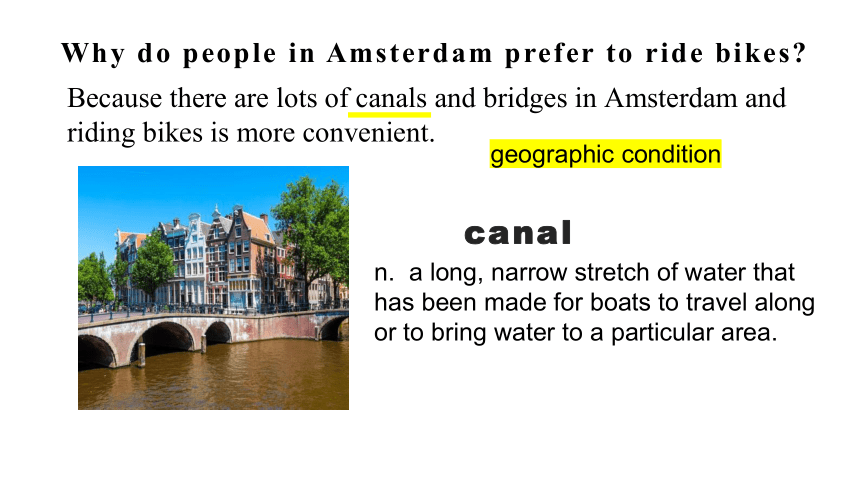
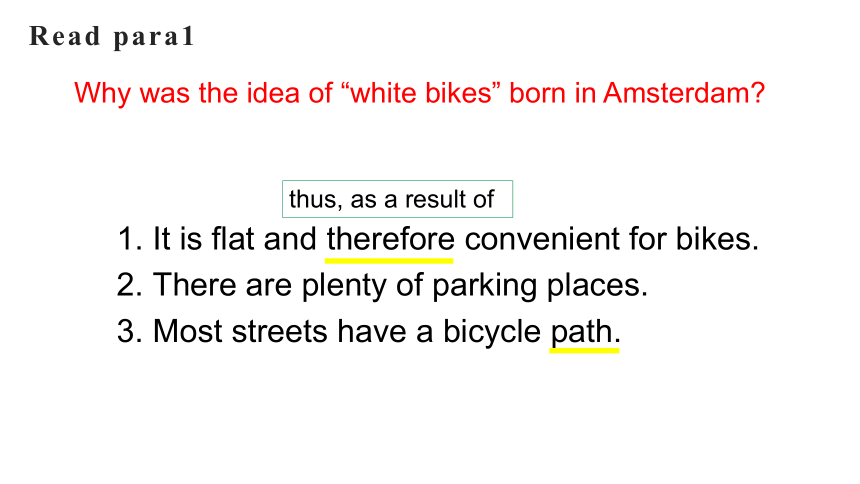
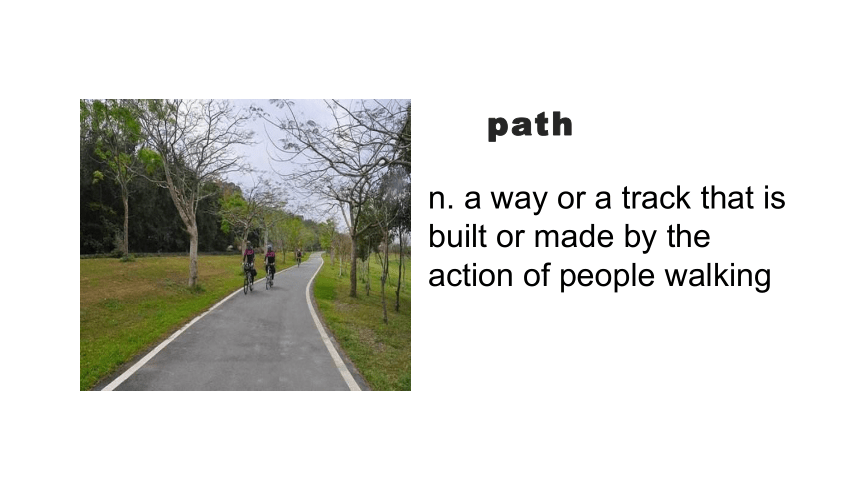
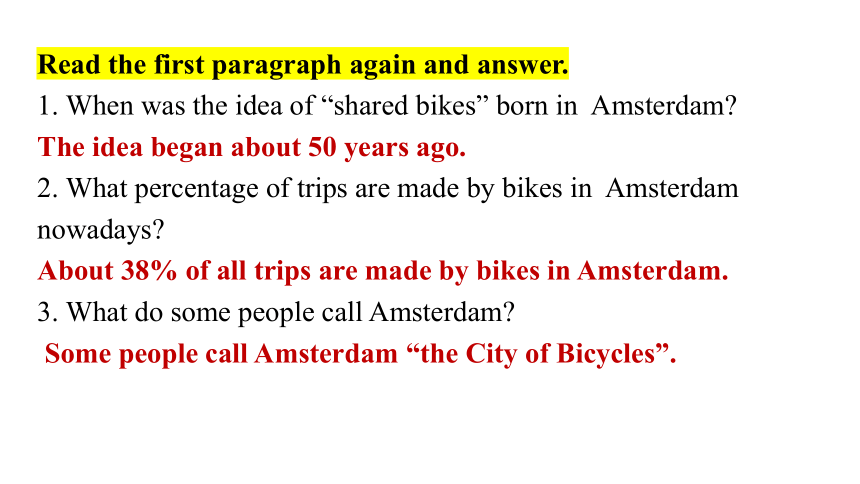

文档简介
(共43张PPT)
What are they
Shared-bikes
What are the advantages and disadvantages of them
make “the last-mile
distance” easy
convenient
provide public
transport
reduce pollution
save energy
...
advantages
Advantages:
1. Shared bikes are very convenient, making “the last-mile distance”easy. It can save a lot of time.
2. Shared bikes help reduce pollution, so it can protect the environment.
3. Shared bikes are not only easy and cheap to use, but also good for health.
4. We can ride a shared bike anytime and anywhere. It's user-friendly and flexible.
cause parking
problems
cause accidents on the road
...
disadvantages
What are the advantages and disadvantages of them
Disadvantages:
1. With the increase of shared bikes, some unexpected accidents are caused on the road.
2. Besides, shared bikes can cause some parking problems.
Can you guess in which city the idea of “shared bikes” was born
Amsterdam
the capital of Netherlands/Holland
It’s a city which has 14 million bicycles among 15 million people.
Watch &think: Why do people in Amsterdam prefer to ride bikes
Why do people in Amsterdam prefer to ride bikes
Because there are lots of canals and bridges in Amsterdam and riding bikes is more convenient.
canal
n. a long, narrow stretch of water that has been made for boats to travel along or to bring water to a particular area.
geographic condition
Read para1
1. It is flat and therefore convenient for bikes.
2. There are plenty of parking places.
3. Most streets have a bicycle path.
thus, as a result of
Why was the idea of “white bikes” born in Amsterdam
path
n. a way or a track that is built or made by the action of people walking
Read the first paragraph again and answer.
1. When was the idea of “shared bikes” born in Amsterdam
The idea began about 50 years ago.
2. What percentage of trips are made by bikes in Amsterdam nowadays
About 38% of all trips are made by bikes in Amsterdam.
3. What do some people call Amsterdam
Some people call Amsterdam “the City of Bicycles”.
Predict what will be talked about in the following paragraphs.
the history of “white bikes”
the development of “white bikes”
the results of “white bikes”
the benefits the idea brought
how people use the “white bikes”
Read the paragraphs 2-6 quickly and check your predictions.
Check your predictions
the history of “white bikes”
the development of “white bikes”
the results of “white bikes”
the benefits the idea brought
how people use the “white bikes”
√
In what order is the development of “white bikes” arranged
time order
How do you know that
In the 1960s
In 1999
Nowadays
Read the paragraphs 2-6 carefully and fill in the table.
“White bikes” in the 1960s
purposes actions results
The return of “white bikes” in 1999
actions results
“White bikes” nowadays
influence around the world in China
“White bikes” in the 1960s
purposes actions results
become impossible to see
to save energy
to reduce pollution
to provide free public transport
painted bicycles white
placed them in many areas for people to use
problems came up
the “white bikes” all disappeared
Retell the first part—“white bikes” in the 1960s
In the 1960s, a group of cycling fans in Amsterdam first had the idea for “white bikes”. They wanted to save energy, reduce pollution and provide free public transport. They painted bicycles white and placed them in many areas for people to use. Within a matter of weeks, the bikes had all been stolen and the project came to an end.
The return of the “white bikes” in 1999
actions results
had a computer tracking system in it
painted in bright colors
parked at special parking places
the “white bikes” returned to Amsterdam
people can enjoy the clean and easy transport in central Amsterdam
Retell the second part—“white bikes” in 1999
In 1999, “white bikes” returned to Amsterdam. This time every bike had a computer tracking system in it to make it possible to record its movements. They were painted in bright colors and parked at special parking places.
.
“White bikes” nowadays
influence around the world in China
spread
the idea has pedalled its way around the world
there has been a global increase in bike-sharing
more and more cities have “white bike” programs
(benefits and problems)
Retell the third part—“white bikes” nowadays
Nowadays, the idea of “white bikes” has pedalled its way around the world. More and more cities in China have their own “white bikes” programmes.
.
1. Why did cycling fans put forward the idea of “white
bikes” in the 1960s
2. What is the difference between the “white bikes” of the
1960s and of 1999
3. What effects have “white bikes” had on Amsterdam
4. Why has the idea spread to other parts of the world in recent years
Read the passage again and answer questions. (Ex.4 on P38)
1. Why did cycling fans put forward the idea of
“white bikes” in the 1960s
Because they believed that it would be better for
everybody if cars weren't allowed in the city centre
and only bicycles were. They hope this would help to
save energy, reduce pollution and provide free public
transport.
2. What is the difference between the “white bikes”
of the 1960s and of 1999
in the 1960s in 1999
painted bicycles white placed them in many areas for people to use
painted in bright colors
parked at special parking
places
had a computer tracking
system in it
3. What effects have “white bikes” had on
Amsterdam
People can enjoy the clean and easy transport in
central Amsterdam.
4. Why has the idea spread to other parts of the
world in recent years
Because other parts of the world have similar
demands and the idea of “white bikes” is a really
good one.
Summary
Dig Deeper
1. What does the title “White Bikes on the Road” mean
2. What does the writer mean by saying “Where will bike-
sharing go in China You decide.”
“White bikes” on the road refers to “white bikes” being used to ride around the streets of a city. Apart from the literal meaning, the title can also mean that the effort to implement(实施) “white bikes” project takes time and it's still on the way. There're still aspects that need to be improved.
1. What does the title “White Bikes on the Road” mean
Problems we are facing
Whether shared bikes will bring benefits to us depends on how we use them.
Young people, such as the students, will determine how successful bike-sharing is in the future by deciding whether or not they want to use it.
2. What does the writer mean by saying “Where will bike-
sharing go in China You decide.”
The writer’s attitude towards the “white bikes” is .
A. supportive
B. opposed
C. not stated
D. Pessimistic悲观的
Explanation
People in Amsterdam have been enjoying the benefits of cycling for years. The idea began about 50 years ago, and was first known as “white bikes”. Amsterdam is a good city for cycling because it’s flat and therefore convenient for bikes. There are also plenty of places for bicycle parking and most streets in the city centre have a bicycle path. Because of its convenience for bicycles, Amsterdam has become very popular with cyclists—an amazing 38% of all trips are made by bike. Some people even call Amsterdam “the City of Bicycles”.
be known as 作为…出名
大量的
be popular with 受…欢迎
多年
Where did the idea of “white bikes” come from In the 1960s, a group of cycling fans came up with an idea. They believed that it would be better for everybody if cars weren’t allowed in the city centre and only bicycles were. They were hopeful that this would help to save energy, reduce pollution and provide free public transport. The group painted hundreds of bicycles white and placed them in many areas around Amsterdam for people to use. Anyone was allowed to take them and use them for short journeys.
想到,提出
宾语从句
如果(主将从现)
Paint sth color 把…刷成颜色
v. 放置
People would leave the bike in the place where they finished their journey, so that someone else could then take it and use it from there. Soon after, however, problems came up and the “white bikes” all disappeared — thieves stole them all in a matter of weeks!
定于从句
目的状语从句
出现,
In 1999, the “white bikes” returned to Amsterdam—this time with a computer tracking system to record their every move! To take a bicycle, you had to put in a special card. The new “white bikes” were not actually white but painted in bright colours. The bikes were parked at special parking places. Thus people who wanted to use them had to take them to another special parking place near their destination and leave them there.
定语从句
Thanks to the ideas and efforts of many people, like the cycling fans of the 1960s and those who enabled the return of “white bikes”, you can now enjoy clean air and easy transport in central Amsterdam.
Nowadays, the idea of “white bikes” has pedalled its way around the world and there has been a global increase in bike-sharing.
多亏了
In China, more and more cities have their own “white bike” programmes. Both the locals and tourists like to use shared bikes because bike-sharing is a cheap and easy way to save energy, reduce air and noise pollution, and enjoy the benefits of exercise in cities. However, problems can also develop, like the theft of bikes and parking issues. Fortunately, people are trying different ways of solving those problems. Where will bike-sharing go in China You decide.
课文语法填空
People 1. (enjoy) the benefits of cycling in Amsterdam for years. It is a good city for cycling because it is flat and 2. convenient for bikes.
In the 1960s,a group of cycling fans came up 3. an idea. They believed that 4. would be better if cars weren’t allowed in the city centre and only bicycles were.
have been enjoying
therefore
with
it
They 5. (paint) hundreds of bicycles white and placed them in many areas around Amsterdam for people 6. (use).Wherever someone finished a journey,they would leave the bike there for someone else to use.But the problem was that 7. (thief) stole all the bicycles within weeks!
In 1999,the “white bikes” returned to Amsterdam.The new “white bikes” were not 8. (actual) white but painted in bright colours.
painted
to use
thieves
actually
Thanks to the ideas and efforts of many people,like the
9. (cycle)fans of the 1960s,many people around the world have been enjoying city centre streets without cars for many years.
Nowadays,the idea has spread around the world.In China,even 10. (many) cities have their own programmes.However,problems can also develop.People are trying different ways to find solutions to those problems.
cycling
more
What are they
Shared-bikes
What are the advantages and disadvantages of them
make “the last-mile
distance” easy
convenient
provide public
transport
reduce pollution
save energy
...
advantages
Advantages:
1. Shared bikes are very convenient, making “the last-mile distance”easy. It can save a lot of time.
2. Shared bikes help reduce pollution, so it can protect the environment.
3. Shared bikes are not only easy and cheap to use, but also good for health.
4. We can ride a shared bike anytime and anywhere. It's user-friendly and flexible.
cause parking
problems
cause accidents on the road
...
disadvantages
What are the advantages and disadvantages of them
Disadvantages:
1. With the increase of shared bikes, some unexpected accidents are caused on the road.
2. Besides, shared bikes can cause some parking problems.
Can you guess in which city the idea of “shared bikes” was born
Amsterdam
the capital of Netherlands/Holland
It’s a city which has 14 million bicycles among 15 million people.
Watch &think: Why do people in Amsterdam prefer to ride bikes
Why do people in Amsterdam prefer to ride bikes
Because there are lots of canals and bridges in Amsterdam and riding bikes is more convenient.
canal
n. a long, narrow stretch of water that has been made for boats to travel along or to bring water to a particular area.
geographic condition
Read para1
1. It is flat and therefore convenient for bikes.
2. There are plenty of parking places.
3. Most streets have a bicycle path.
thus, as a result of
Why was the idea of “white bikes” born in Amsterdam
path
n. a way or a track that is built or made by the action of people walking
Read the first paragraph again and answer.
1. When was the idea of “shared bikes” born in Amsterdam
The idea began about 50 years ago.
2. What percentage of trips are made by bikes in Amsterdam nowadays
About 38% of all trips are made by bikes in Amsterdam.
3. What do some people call Amsterdam
Some people call Amsterdam “the City of Bicycles”.
Predict what will be talked about in the following paragraphs.
the history of “white bikes”
the development of “white bikes”
the results of “white bikes”
the benefits the idea brought
how people use the “white bikes”
Read the paragraphs 2-6 quickly and check your predictions.
Check your predictions
the history of “white bikes”
the development of “white bikes”
the results of “white bikes”
the benefits the idea brought
how people use the “white bikes”
√
In what order is the development of “white bikes” arranged
time order
How do you know that
In the 1960s
In 1999
Nowadays
Read the paragraphs 2-6 carefully and fill in the table.
“White bikes” in the 1960s
purposes actions results
The return of “white bikes” in 1999
actions results
“White bikes” nowadays
influence around the world in China
“White bikes” in the 1960s
purposes actions results
become impossible to see
to save energy
to reduce pollution
to provide free public transport
painted bicycles white
placed them in many areas for people to use
problems came up
the “white bikes” all disappeared
Retell the first part—“white bikes” in the 1960s
In the 1960s, a group of cycling fans in Amsterdam first had the idea for “white bikes”. They wanted to save energy, reduce pollution and provide free public transport. They painted bicycles white and placed them in many areas for people to use. Within a matter of weeks, the bikes had all been stolen and the project came to an end.
The return of the “white bikes” in 1999
actions results
had a computer tracking system in it
painted in bright colors
parked at special parking places
the “white bikes” returned to Amsterdam
people can enjoy the clean and easy transport in central Amsterdam
Retell the second part—“white bikes” in 1999
In 1999, “white bikes” returned to Amsterdam. This time every bike had a computer tracking system in it to make it possible to record its movements. They were painted in bright colors and parked at special parking places.
.
“White bikes” nowadays
influence around the world in China
spread
the idea has pedalled its way around the world
there has been a global increase in bike-sharing
more and more cities have “white bike” programs
(benefits and problems)
Retell the third part—“white bikes” nowadays
Nowadays, the idea of “white bikes” has pedalled its way around the world. More and more cities in China have their own “white bikes” programmes.
.
1. Why did cycling fans put forward the idea of “white
bikes” in the 1960s
2. What is the difference between the “white bikes” of the
1960s and of 1999
3. What effects have “white bikes” had on Amsterdam
4. Why has the idea spread to other parts of the world in recent years
Read the passage again and answer questions. (Ex.4 on P38)
1. Why did cycling fans put forward the idea of
“white bikes” in the 1960s
Because they believed that it would be better for
everybody if cars weren't allowed in the city centre
and only bicycles were. They hope this would help to
save energy, reduce pollution and provide free public
transport.
2. What is the difference between the “white bikes”
of the 1960s and of 1999
in the 1960s in 1999
painted bicycles white placed them in many areas for people to use
painted in bright colors
parked at special parking
places
had a computer tracking
system in it
3. What effects have “white bikes” had on
Amsterdam
People can enjoy the clean and easy transport in
central Amsterdam.
4. Why has the idea spread to other parts of the
world in recent years
Because other parts of the world have similar
demands and the idea of “white bikes” is a really
good one.
Summary
Dig Deeper
1. What does the title “White Bikes on the Road” mean
2. What does the writer mean by saying “Where will bike-
sharing go in China You decide.”
“White bikes” on the road refers to “white bikes” being used to ride around the streets of a city. Apart from the literal meaning, the title can also mean that the effort to implement(实施) “white bikes” project takes time and it's still on the way. There're still aspects that need to be improved.
1. What does the title “White Bikes on the Road” mean
Problems we are facing
Whether shared bikes will bring benefits to us depends on how we use them.
Young people, such as the students, will determine how successful bike-sharing is in the future by deciding whether or not they want to use it.
2. What does the writer mean by saying “Where will bike-
sharing go in China You decide.”
The writer’s attitude towards the “white bikes” is .
A. supportive
B. opposed
C. not stated
D. Pessimistic悲观的
Explanation
People in Amsterdam have been enjoying the benefits of cycling for years. The idea began about 50 years ago, and was first known as “white bikes”. Amsterdam is a good city for cycling because it’s flat and therefore convenient for bikes. There are also plenty of places for bicycle parking and most streets in the city centre have a bicycle path. Because of its convenience for bicycles, Amsterdam has become very popular with cyclists—an amazing 38% of all trips are made by bike. Some people even call Amsterdam “the City of Bicycles”.
be known as 作为…出名
大量的
be popular with 受…欢迎
多年
Where did the idea of “white bikes” come from In the 1960s, a group of cycling fans came up with an idea. They believed that it would be better for everybody if cars weren’t allowed in the city centre and only bicycles were. They were hopeful that this would help to save energy, reduce pollution and provide free public transport. The group painted hundreds of bicycles white and placed them in many areas around Amsterdam for people to use. Anyone was allowed to take them and use them for short journeys.
想到,提出
宾语从句
如果(主将从现)
Paint sth color 把…刷成颜色
v. 放置
People would leave the bike in the place where they finished their journey, so that someone else could then take it and use it from there. Soon after, however, problems came up and the “white bikes” all disappeared — thieves stole them all in a matter of weeks!
定于从句
目的状语从句
出现,
In 1999, the “white bikes” returned to Amsterdam—this time with a computer tracking system to record their every move! To take a bicycle, you had to put in a special card. The new “white bikes” were not actually white but painted in bright colours. The bikes were parked at special parking places. Thus people who wanted to use them had to take them to another special parking place near their destination and leave them there.
定语从句
Thanks to the ideas and efforts of many people, like the cycling fans of the 1960s and those who enabled the return of “white bikes”, you can now enjoy clean air and easy transport in central Amsterdam.
Nowadays, the idea of “white bikes” has pedalled its way around the world and there has been a global increase in bike-sharing.
多亏了
In China, more and more cities have their own “white bike” programmes. Both the locals and tourists like to use shared bikes because bike-sharing is a cheap and easy way to save energy, reduce air and noise pollution, and enjoy the benefits of exercise in cities. However, problems can also develop, like the theft of bikes and parking issues. Fortunately, people are trying different ways of solving those problems. Where will bike-sharing go in China You decide.
课文语法填空
People 1. (enjoy) the benefits of cycling in Amsterdam for years. It is a good city for cycling because it is flat and 2. convenient for bikes.
In the 1960s,a group of cycling fans came up 3. an idea. They believed that 4. would be better if cars weren’t allowed in the city centre and only bicycles were.
have been enjoying
therefore
with
it
They 5. (paint) hundreds of bicycles white and placed them in many areas around Amsterdam for people 6. (use).Wherever someone finished a journey,they would leave the bike there for someone else to use.But the problem was that 7. (thief) stole all the bicycles within weeks!
In 1999,the “white bikes” returned to Amsterdam.The new “white bikes” were not 8. (actual) white but painted in bright colours.
painted
to use
thieves
actually
Thanks to the ideas and efforts of many people,like the
9. (cycle)fans of the 1960s,many people around the world have been enjoying city centre streets without cars for many years.
Nowadays,the idea has spread around the world.In China,even 10. (many) cities have their own programmes.However,problems can also develop.People are trying different ways to find solutions to those problems.
cycling
more
同课章节目录
- Unit 7 Art
- Lesson 1 Masterpieces
- Lesson 2 Beijing Opera
- Lesson 3 A Musical Genius
- Unit 8 Green living
- Lesson 1 Roots and Shoots
- Lesson 2 Greening the Desert
- Lesson 3 "White Bikes" on the Road
- Unit 9 Learning
- Lesson 1 Active Learning
- Lesson 2 Language Learning Tips
- Lesson 3 The Secrets of Your Memory
